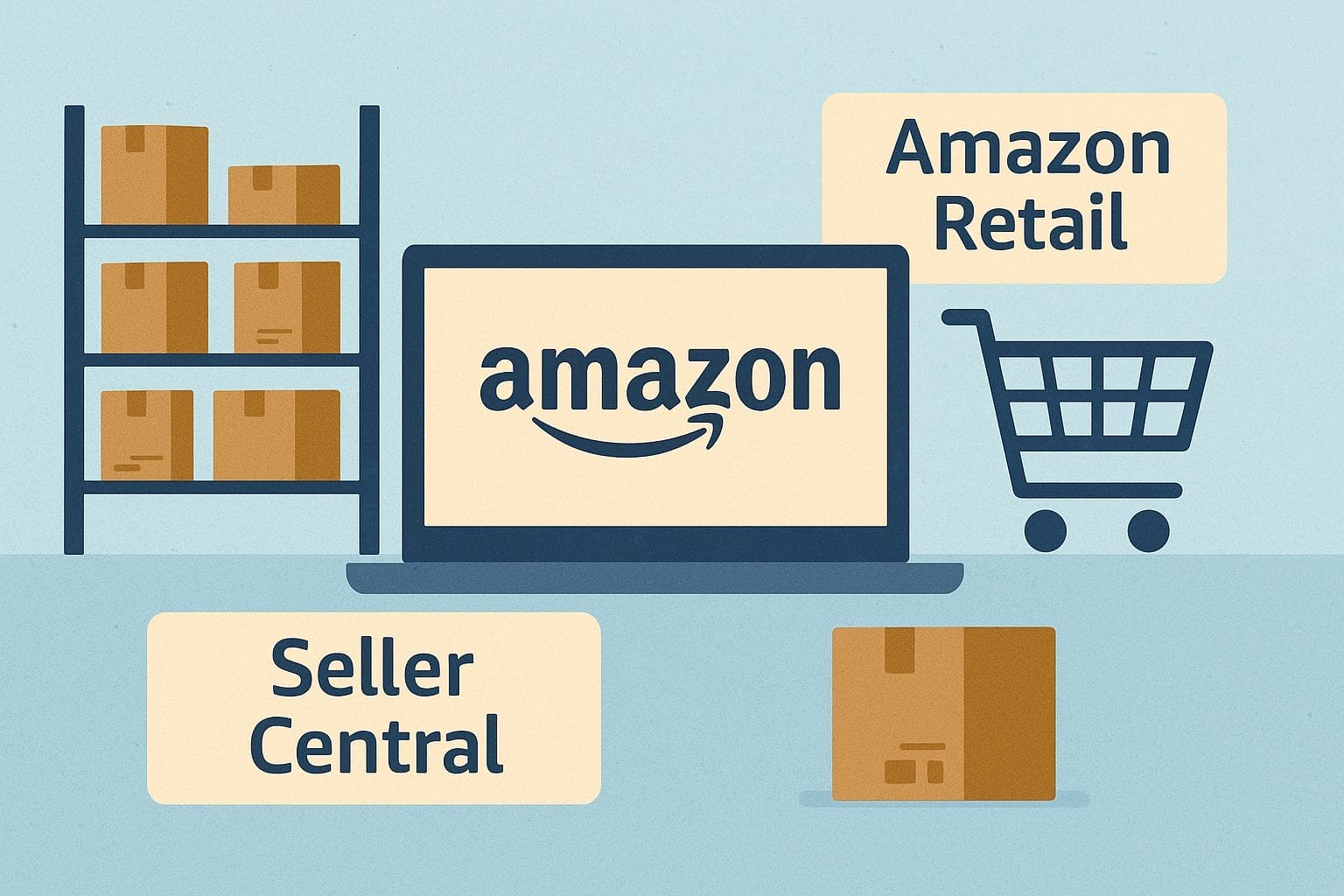Amazon Retail vs Marketplace: What’s Right for Your Brand?


As a brand looking to scale on Amazon, one of the most critical decisions you’ll face is whether to sell through Amazon Retail or Seller Central. Each model comes with its own set of advantages, challenges, and trade-offs. Choosing the right path can significantly impact your margins, control over the customer experience, and long-term success on the platform.
In this blog, we’ll compare Amazon Retail vs Seller Central, diving deep into key differences such as ownership, margins, the Buy Box, and retail media access. By the end, you’ll have a clear understanding of which option is best for your brand’s growth strategy on Amazon.
Before diving into the advantages of each model, let’s quickly define what they are:
While both models provide opportunities to scale on Amazon, they differ in key areas, which we’ll now explore.
One of the primary distinctions between Amazon Retail and Seller Central is the level of ownership and control you maintain over your brand.
If brand control and ownership are key for you, Seller Central offers more flexibility and control, allowing you to make strategic decisions about pricing, inventory, and customer engagement.
The way you’re compensated and the margins you earn vary significantly between Amazon Retail and Seller Central.
For brands that are focused on maximizing margins, Seller Central offers a better opportunity for higher profitability. However, if you’re looking for convenience and are willing to sacrifice margin, Amazon Retail might be the right fit.
One of the most coveted spots on Amazon is the Buy Box. The Buy Box is the “Add to Cart” button that drives a majority of sales on Amazon. However, gaining ownership of the Buy Box depends on whether you’re selling via Amazon Retail or Seller Central.
While Amazon Retail gives Amazon sole ownership of the Buy Box, Seller Central opens up the opportunity to compete for this valuable spot. Brands that focus on great service and competitive pricing can win the Buy Box and capture more sales. Learn more about the essential lessons for starting and thriving on Amazon.
Retail media access is one of the most powerful marketing tools available to Amazon sellers.
For brands that are looking to leverage Amazon’s advertising capabilities and gain more exposure through targeted campaigns, Seller Central offers better opportunities for marketing and driving traffic to your listings.
Fulfillment is another area where these two models differ significantly.
If you prefer to offload fulfillment to Amazon, Amazon Retail might be a better choice. However, if you want more control over logistics and fulfillment, Seller Central provides more flexibility with FBA or FBM options.
Choosing between Amazon Retail vs Seller Central is a pivotal decision for any brand looking to scale on Amazon. If you want full control over your listings, margins, and customer experience, Seller Central is likely the better option. On the other hand, if you prefer Amazon to handle most aspects of selling and fulfillment while accepting lower margins, Amazon Retail might be right for you.
At Goamify, we specialize in helping brands navigate the complexities of selling on Amazon. Whether you’re selling through Amazon Retail or Seller Central, our expert team can guide you through the process, ensuring your brand maximizes its potential and drives long-term success.
Ready to take your Amazon business to the next level? Contact Goamify today for expert guidance on choosing the right Amazon selling model for your brand.
Learn more about how we can help your Amazon business succeed!